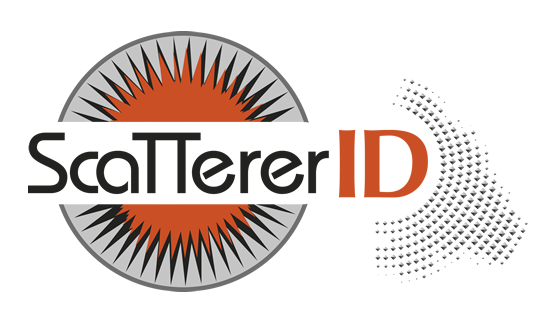Scatterer ID Project
Workpackages of the project
The proposed methodology of the ScattererID project is based on significant tasks and clearly defined actions, enabling a progression by stages trough 60 months.
The 3 axes of the project correspond to 3 WP:
- WP1: Chipless reconfigurable
- WP2: Chipless sensor
- WP3: Gesture recognition
Like any ambitious research project, some actions are based on the expertise and the skills of partners. This is why part of this work will be done in collaboration with the IES | A. Vena (WP1&2), LTM | T. Baron (WP2).
These collaborations are part of the continuity of the existing ones. As it is already the case, it will be possible to obtain nanowires from the LTM, access to the facilities of the IES (every type of sensor measurements) or at least the PTA Up-line Technological Platform. The objectives are to make nanowires more selective, as well as being able to try to sense other physical quantities, such as some gas, for example.
Project reference
Topic
Project type
Scheme Project
Project cost
Project funding
WP0 - Management of the project
The aim of this WP is the overall management of the project. It will be managed by the Principal investigator that will take care of all important aspects of project management including financial management and reporting to EU authorities. The following actions will be implemented:
- Participation to national and international conferences
- Organization of workshop events
- Submission of paper in international scientific journals and patent applications
WP1 Task 1 – RF switches
The aim is to develop RF switches based on the CBRAM technology. It consists of improving our knowledge in the physical aspects in charge of conductive filament creation in ionic conductor composite materials. Thanks to this, we will identify and characterize the materials and processes that will be used according to different requirements: EM properties, compatibility with printing techniques. The objective of this task is to develop the technology that will be used to achieve the first demonstrators (Task N. 2).
WP1 Task 2 – Reconfigurable chipless tags
By incorporating switches into chipless tags, the ID can be reconfigured during the tag’s use. To do this, the tag will be connected with a voltage source. As reference, the aim is firstly to design a simple tag. After that, more advanced reconfigurable tags will be designed, that is to say, tags taking the recommendations of the Task N. 3 (robust Tags) into account. In addition to the modeling and simulation parts, different approaches to encode the information will be investigated. For each of those, the amount of information (number of bits) that can be encoded will be evaluated.
WP2 Task 4 – Chipless sensing-tags
This task relates to the sensor part of the project. The integration of the sensor functionality into the chipless tag, according to the recommendations of task No. 3 will be addressed. The sensor function will be carried out with materials provided by the LTM (silicon nanowires with different dopants). RF characterization (with plane wave / RCS…) will be performed. A model describing the variation of the humidity based on the RF measurement of the materials’ electrical parameters changes will be realized. By reverse engineering, first measurements results will be used to refine the simulation model developed.
WP2 Task 5 – Advanced chipless tags
In this task the goal is to realize advanced chipless tag based on the two functionalities developed in the tasks No. 2 and No. 4.
WP3 Task 6 – Gesture recognition
The aim of this task is to develop techniques compatible with gesture recognition based on a simple chipless label used as a remote control. Two categories of interactions will be investigated: joystick mode, keyboard mode. The evolution of resonance frequencies of the scatterers printed on the tag will play a key role. We already have observed clear and direct relations of it with user interaction.






